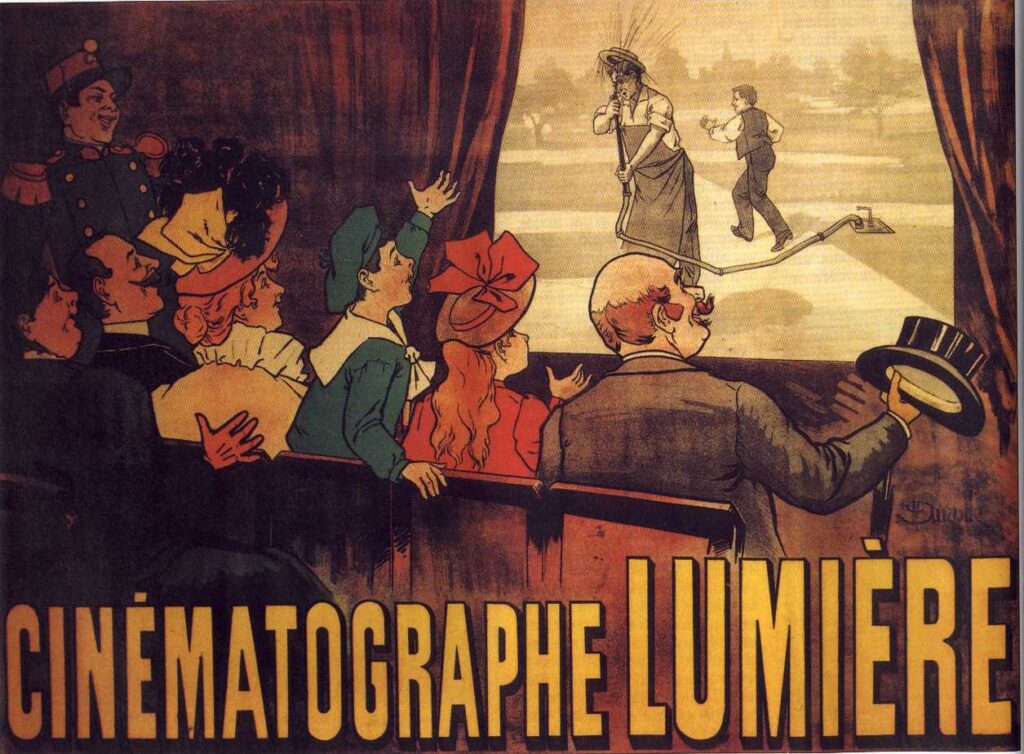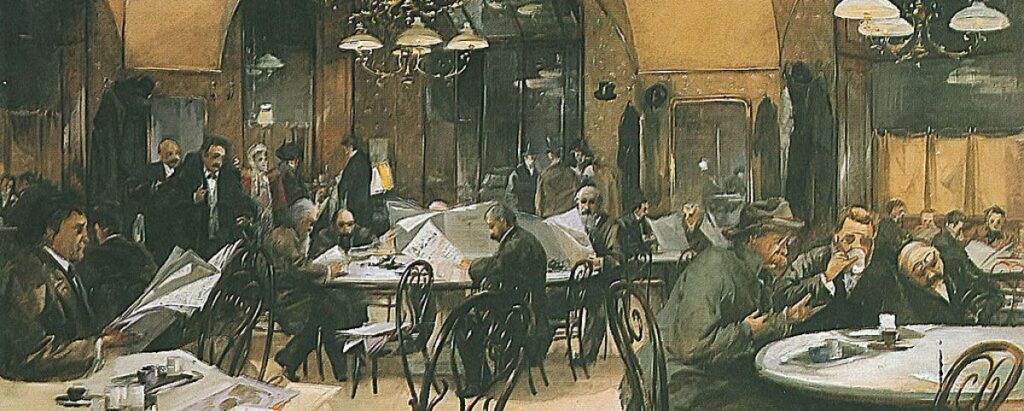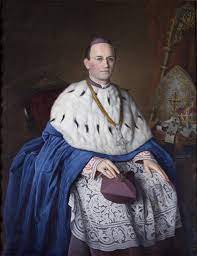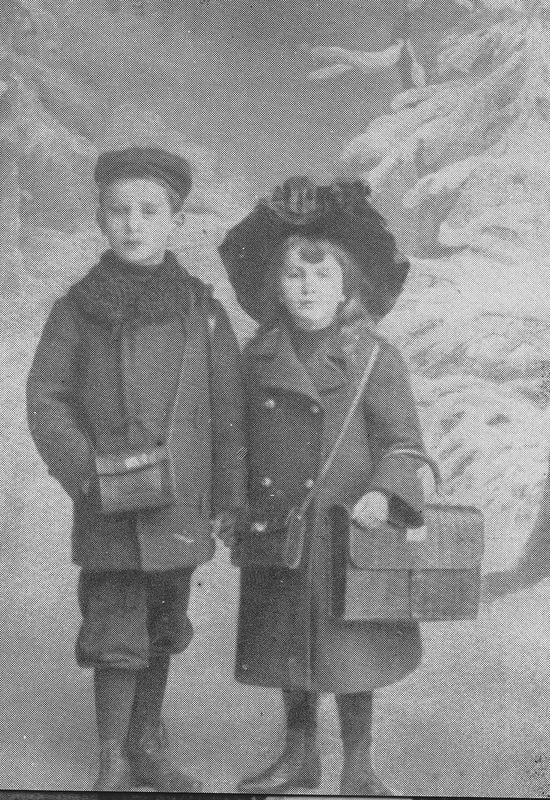Anton Walbrook was born in Vienna – as Adolf Anton Wilhelm Wohlbruck – on this day in 1896, less than eight months after the arrival of the Cinématographe.

The Lumière Brothers, Auguste and Louis, had unveiled their Cinématographe – a lightweight device combining camera, printer and projector – to the public in Paris in December 1895 but were now touring their new invention around the world. The Vienna screenings opened on 27 March 1896 and followed the same pattern as in Paris, with a private show at the city’s k. k. Graphische Lehr- und Versuchsanstalt [Graphic Research Institute] followed by public demonstrations at Kärtner Straße 45 in the city centre. These screenings ran throughout the day from 10 in the morning until 8 at night and, for a fee of fifty kreuzer, visitors could watch a selection of short documentary films accompanied by live piano music. To make the shows more attractive to Viennese citizens, the Lumière agents Alexander Promio and Alexander Werschinger filmed a series of sequences around the capital in early April: shots of St Stephan’s Cathedral, the huge Ferris wheel in the Prater (which would feature in The Third Man five decades later) and scenes of crowds strolling through the Stadtpark. A special screening of these was arranged for the Emperor Franz Joseph in the Hofburg on 18 April 1896. Werschinger recalled the scene:
We had a small room on the second floor of the Burg, as the palace is known, which we were able to try out two days in advance. The entire presentation was to be limited to five minutes, as it was feared that the flickering pictures could damage His Majesty’s eyes. It was also very difficult to explain to the attendant that the demonstration had to be carried out in the dark. He said that this was not possible because court protocol demanded that two candles should always be lit in the presence of His Majesty. Everyone was amazed that after he had seen the pictures, the Emperor demanded very animatedly that they be shown again twice.
The cinema had arrived in Vienna.
Vienna was still buzzing with excitement over this new form of entertainment when young Adolf Wohlbrück was born, but nobody at the time could foresee that ‘moving pictures’ would provide a career for the newborn child. Nor could they have foreseen that within twenty years the Emperor’s candles would be extinguished and his Empire dismembered. For the time being, Vienna was on the rise.

Karl Lueger’s Christian Social Party had recently wrestled power from the Liberals and with Lueger as Mayor, Vienna began its transformation into a city of elegant gardens and parks. Artists, writers, musicians and other intellectuals met to discuss their views over coffee in Café Griensteidl, Café Central, or Café Museum. Prominent among these was a group known as Jung Wien [Young Vienna], whose members included the playwrights Arthur Schnitzler – then writing his controversial Reigen – and Hugo von Hofmannsthal. Egon Schiele was about to spearhead the Wiener Secession art movement, ‘Waltz King’ Johann Strauss the Younger – composer of the Blue Danube waltz, Die Fledermaus and Der Zigeunerbaron [The Gypsy Baron] – lived in Igelgasse, Freud had just coined the term ‘psychoanalysis’, Gustav Mahler had recently been appointed Director of the State Opera House, and cinema was the newest addition to the arts in which the Wohlbrück family had been involved for centuries.

The future actor’s father Adolf Wohlbrück had married – at the age of 32 – Gisela Rosa Cohn, a 17-year-old girl from a respectable Viennese family. Born on 21 July 1879 in Vienna, she was the daughter of Wilhelm and Antonia Kohn. Her father – a merchant – had recently died, and it seems her parents had hoped for a better match: having a clown for a son-in-law was rather a disappointment. Nonetheless, Gisela fell pregnant almost immediately and their first child, Adolf Anton Wilhelm Wohlbrück, was born at their home at Jörgerstraße 32, in northwest Vienna, on Thursday 19 November 1896. He was baptised exactly a month later by Fr. Emil Janetzky, the parish priest of Hernals, with religion marked as ‘Catholic’ in the final column (below.)

Although it is frequently stated that Wohlbrück’s mother was Jewish – and the Kohn name clearly indicates Jewish ancestry – her family seem to have embraced Catholicism with ardour: Theodor Kohn (1845–1915), the Catholic archbishop of Olmütz, in Austro-Hungarian Moravia, was a close relative. As I recently discussed in another blogpost elsewhere, the actor’s sense of Jewish identity was more complex and nuanced than is generally stated.

Barely a year later, his sister Antonie Marie was born on 13 November 1897 – in Stuttgart, due to the itinerant nature of circus life. Gisela’s mother was unhappy with the prospect of her grandchildren spending their young lives on the road with a caravan of circus performers, and insisted that they remain in Vienna. In consequence, the siblings were raised largely by their grandmother Antonia, who lived in the same street. Over the next few years, his Viennese childhood would involve both the spectacular performances of the circus and the more serious atmosphere of his monastic education at the ‘Lazarenkloster’, run by the Christian Brothers in Schopenhauerstraße – twin strands of performance and discipline that he would pull together in his acting career. The latter only began, however, when the family moved to Berlin in 1904 and another chapter in his life began…
